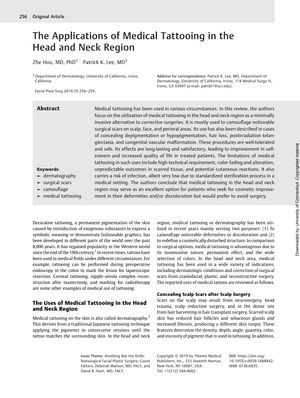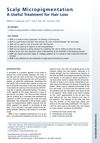The Applications of Medical Tattooing in the Head and Neck Region
June 2019
in “
Facial Plastic Surgery
”

TLDR Medical tattooing improves appearance and quality of life, but has potential risks.
Medical tattooing, also known as dermatography, has various applications in the head and neck region, including as a minimally invasive alternative to corrective surgeries. It can be used to camouflage noticeable surgical scars, depigmentation or hypopigmentation, hair loss, postirradiation telangiectasia, and congenital vascular malformation. Medical tattooing has been shown to greatly improve the appearance of scars and enhance patients' quality of life. However, there are potential risks and complications, such as color fading, uneven pigment placement, and infection. Medical tattooing is a safe and effective complement to surgical procedures in the head and neck region.




